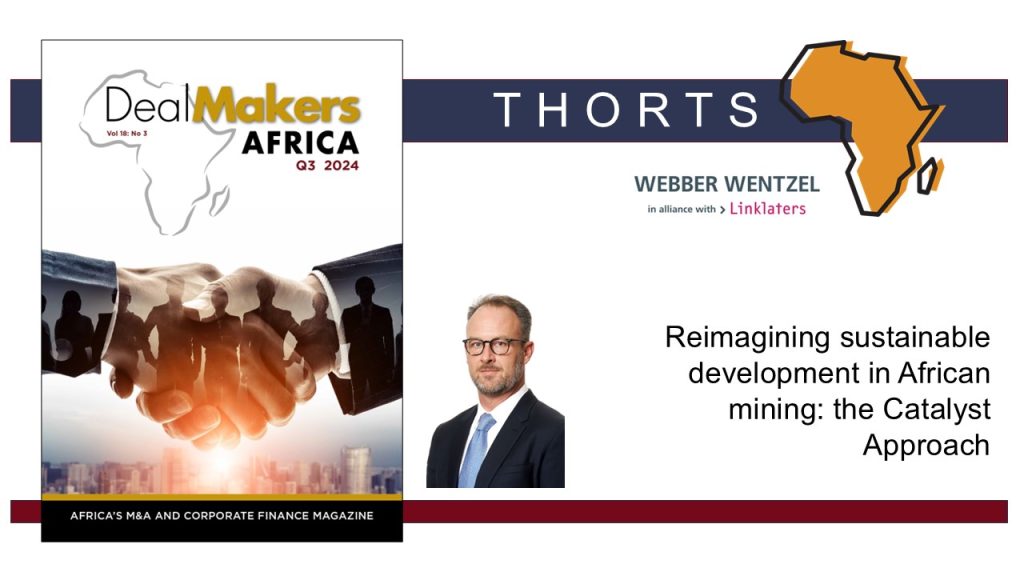In the complex landscape of African mining, particularly in South Africa, the concept of sustainable development has long been a point of contention. Mining companies, faced with increasing pressure to contribute to long-term community development, often view these initiatives as an additional tax – a perspective that can hinder both mining operations and genuine sustainable growth.
A paradigm shift is needed: from viewing mining companies as direct providers of development to seeing them as catalysts for sustainable economic ecosystems.
THE CURRENT PARADIGM: Unsustainable and unappreciated
The traditional approach to sustainable development in mining regions has been characterised by the direct provision of services and infrastructure by mining companies. This model, while well-intentioned, presents several critical issues, such as:
- Increased operational costs: Mining companies often see sustainable development initiatives as an additional financial burden, potentially driving away investment and increasing cut-off grades, thereby sterilising minerals that could otherwise be economically extracted.
- Misaligned responsibilities: Local municipalities, facing their challenges, increasingly push their responsibilities onto mines. This blurs the lines between corporate social responsibility and governmental duty.
- Lack of recognition: Despite significant investments in schools, clinics and other infrastructure, mining companies receive little recognition. Host communities often view these provisions as rights, rather than corporate contributions.
- Post-closure unsustainability: Services and infrastructure provided directly by mines often become unsustainable after mine closure, leaving communities vulnerable.
- Siloed approaches: Different departments often pursue separate sustainability initiatives within mining companies, missing opportunities for synergy and efficiency.
THE CATALYST MODEL: A new approach to sustainable development
To address these challenges, we propose a shift towards a “catalyst model” of sustainable development. In this approach, mining companies focus on creating conditions that catalyse broader economic development and attract diverse investments. Key elements of this model include:
- Strategic infrastructure development: Instead of building infrastructure solely for mining operations, companies should design and develop infrastructure that can serve as a foundation for diverse economic activities post-mining.
- Land use planning for the future: Mining companies should engage in long-term land use planning, considering how mining lands can be repurposed for agriculture, tourism or other industries after mine closure.
- Skills development for diversification: Training programmes should focus not just on mining-related skills, but on transferable skills that can support a diversified local economy.
- Incubation of local businesses: Mining companies can act as incubators for local businesses that can serve the mine but are not wholly dependent on it, fostering a more resilient local economy.
- Collaborative governance models: Developing structures for collaborative decision-making between mining companies, local governments and communities can ensure more sustainable and widely accepted development initiatives.
Benefits and key considerations of a catalyst approach
Embracing this catalyst model offers several benefits, such as reducing the perceived extra operational costs, which can make mining investments more appealing. Concentrating on initiatives with multiplier effects ensures more efficient resource utilisation, which fosters the development of a diversified local economy that can prosper beyond the mine’s lifespan. By acting as catalysts, rather than service providers, mining companies can contribute to clearer stakeholder roles and responsibilities, potentially enhancing overall governance and service delivery. A successful catalyst approach can substantially improve community relations and strengthen the social license to operate.
Transitioning to a new catalyst model will necessitate significant adjustments from all parties involved. Governments must establish policies that encourage and reward this model, possibly through tax incentives or licensing regulations. Mining companies should adopt a more cohesive approach, breaking down departmental barriers to fully leverage the catalytic potential of their operations. Transparent communication with communities and other stakeholders is essential to manage expectations and emphasise the long-term advantages of this strategy.
New metrics will be required to gauge the effectiveness of sustainable development initiatives, focusing on long-term economic resilience, rather than short-term service provision. Furthermore, mining companies should collaborate on regional development initiatives, combining resources and expertise for a more substantial impact.
A call for transformative action
The catalyst model represents a transformative approach to sustainable development in mining regions. By shifting from direct provision to strategic enablement, mining companies can contribute to truly sustainable development while potentially reducing costs and increasing investment attractiveness.
Adopting this approach demands a long-term vision, creative problem-solving, and a collective effort from all parties involved. While challenging, the benefits of this transformation – thriving local economies, strengthened community ties, and a more environmentally conscious mining sector – make it an essential and worthwhile pursuit.
As we navigate the complex challenges of sustainable development in African mining, the catalyst model offers a promising path forward. It’s time for mining companies, governments, communities and investors to embrace this new paradigm and work together towards a more sustainable and prosperous future for mining regions across the continent.
Bruce Dickinson is a Partner | Webber Wentzel

This article first appeared in DealMakers AFRICA, the continent’s quarterly M&A publication.
DealMakers AFRICA is a quarterly M&A publication
www.dealmakersafrica.com



